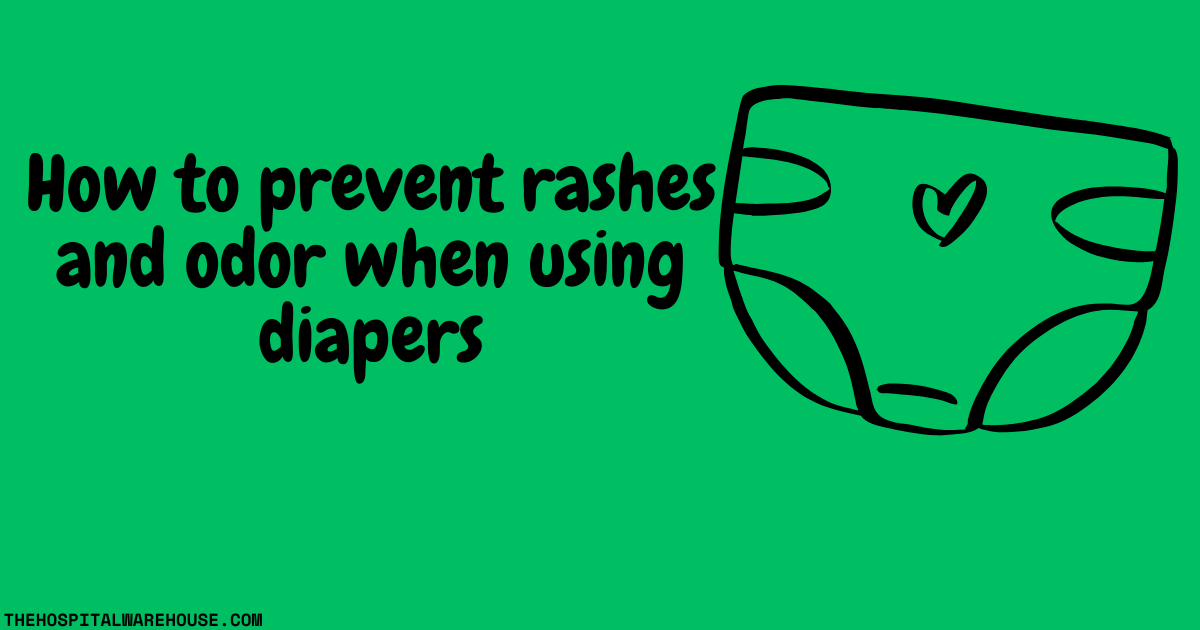
How to Prevent Rashes and Odor When Using Adult Diapers
Living with incontinence doesn't have to mean dealing with uncomfortable rashes or embarrassing odors. Whether you're managing incontinence yourself or caring for a loved one, the right approach to adult diaper use can make all the difference in maintaining comfort, dignity, and healthy skin.
Adult diapers serve as a lifeline for millions of people dealing with incontinence due to medical conditions, mobility issues, or age-related changes. However, two of the most common challenges users face are skin irritation and unpleasant odors. The good news? Both of these issues are largely preventable with the right knowledge and products.
This comprehensive guide will walk you through everything you need to know about preventing rashes and odors when using adult diapers, helping you or your loved one stay comfortable, confident, and healthy.
Understanding the Root Causes
Before diving into prevention strategies, it's crucial to understand why these problems occur in the first place.
What Causes Diaper Rashes in Adults?
Adult diaper rashes typically develop due to three main factors. First, prolonged contact with moisture creates the perfect environment for skin breakdown. When skin stays wet for extended periods, it becomes soft, fragile, and more susceptible to damage. Second, friction from ill-fitting diapers can cause chafing and irritation, especially around the waist, legs, and buttocks. Finally, some individuals may experience allergic reactions to certain materials, adhesives, or fragrances found in adult diapers.
The Source of Unpleasant Odors
Odor issues stem from bacterial growth that thrives in moist environments. When urine and faeces remain in contact with the skin for too long, bacteria multiply rapidly, producing the ammonia-like smell many people associate with incontinence. Poor ventilation in plastic-backed diapers can trap moisture and odors, while infrequent changing allows bacteria to flourish unchecked.
Selecting the Right Adult Diaper
Not all adult diapers are created equal, and choosing the right product is your first line of defense against rashes and odors.
Material Matters
Look for diapers with breathable, cloth-like outer layers that allow air circulation while maintaining waterproof protection. These materials help reduce moisture buildup and keep skin drier. Avoid diapers with heavy plastic backing that can trap heat and humidity against the skin.
For sensitive skin, hypoallergenic and fragrance-free options are essential. Many people don't realize they have sensitivities until they develop a rash, so starting with gentle, unscented products is always wise.
The Importance of Proper Fit
A well-fitting diaper should be snug but not tight, with no gaps around the legs or waist that could cause leaks. However, it shouldn't be so tight that it restricts movement or causes indentations in the skin. The right fit prevents both leakage and the friction that leads to chafing.
Advanced Features to Consider
Modern adult diapers come with moisture-wicking inner layers that pull wetness away from the skin, keeping the surface dry and comfortable. Some also feature built-in odour control technology using activated carbon or other odour-neutralizing materials.
Establishing a Proper Changing Routine
Consistency is key when it comes to preventing skin problems and odours. Develop a routine that works for your lifestyle while prioritizing skin health.
Timing Is Everything
Change diapers every 3-4 hours during the day, or immediately after bowel movements. Don't wait until the diaper feels heavy or uncomfortable. Setting reminders on your phone can help establish this routine, especially when caring for someone else.
Nighttime presents unique challenges, as sleep shouldn't be interrupted every few hours. Use overnight diapers with higher absorbency for extended wear, but remember these are designed specifically for nighttime use and shouldn't replace regular daytime changing schedules.
Never Compromise on Frequency
It might be tempting to extend wear time to save money or reduce inconvenience, but leaving soiled diapers on for extended periods virtually guarantees skin problems. The cost of treating rashes and infections far exceeds the price of extra diapers.
Mastering Hygiene and Skin Care
Proper cleaning and skin care during diaper changes can prevent most skin problems before they start.
The Right Cleaning Approach
During each diaper change, gently clean the entire diaper area with warm water or alcohol-free wipes. Avoid harsh soaps or wipes containing alcohol, which can strip the skin's natural protective barrier. If soap is necessary, choose mild, unscented options designed for sensitive skin.
Always clean from front to back to prevent bacterial contamination, and pay special attention to skin folds where moisture and bacteria can accumulate.
Drying Techniques
After cleaning, pat the skin completely dry with a soft towel. Never rub or scrub, as this can cause irritation. Allow the skin to air dry for a few minutes before applying a new diaper, especially if there are any signs of redness or irritation.
Protective Barriers
Apply a thin layer of barrier cream or ointment to prevent skin breakdown. Zinc oxide-based products are particularly effective at repelling moisture and protecting sensitive skin. Focus on areas prone to irritation, such as the buttocks, inner thighs, and around the waist.
Additional Protective Measures
Sometimes basic diaper use isn't enough, and additional products can provide extra protection and comfort.
Underpads and Bed Protection
Underpads absorb excess moisture and protect bedding and furniture. They're especially useful at night or during extended sitting periods. Choose breathable underpads that won't trap heat and moisture against the skin.
Specialized Products
Consider odour-neutralizing sprays or liners for extra freshness, though these should supplement, not replace, good hygiene practices. Some people find that alternating between different absorbency levels throughout the day helps maintain comfort and prevent overuse of high-absorbency products.
Recognizing Warning Signs
Early intervention is crucial when it comes to skin problems. Learn to recognize the warning signs that indicate a need for immediate attention.
When to Take Action
Redness, itching, burning, or any discomfort in the diaper area should never be ignored. These early signs often indicate that changes need to be made to your routine or product selection. If symptoms persist despite proper care, don't hesitate to consult a healthcare provider.
Keeping Track
Maintain a simple log of any skin reactions, noting which products were used and any changes in routine. This information can help identify patterns and triggers, making it easier to avoid problematic products in the future.
Lifestyle Factors That Make a Difference
Your overall health and daily habits can significantly impact skin health and odour control.
Hydration and Diet
Staying well-hydrated actually helps reduce odour by diluting urine and making it less concentrated. While it might seem counterintuitive to drink more water when dealing with incontinence, proper hydration supports overall health and can make management easier.
Certain foods can intensify urine odour, including asparagus, garlic, and very spicy foods. While you don't need to eliminate these foods entirely, being aware of their effects can help you plan accordingly.
Supporting Skin Health
A balanced diet rich in vitamins and minerals supports healthy skin that's better able to resist irritation and heal from minor damage. Consider discussing nutritional needs with your healthcare provider, especially if you're managing multiple health conditions.
Moving Forward with Confidence
Preventing rashes and odours when using adult diapers comes down to three key principles: choosing quality products that fit properly, maintaining consistent hygiene routines, and listening to your body's signals. With the right approach, you can maintain comfort, dignity, and healthy skin while managing incontinence effectively.
Remember that everyone's needs are different, and what works for one person might not work for another. Don't be afraid to try different products and approaches until you find what works best for your specific situation. The investment in proper care pays dividends in comfort, confidence, and overall quality of life.
Ready to take control of your incontinence care? The Hospital Warehouse offers a comprehensive selection of high-quality adult diapers, underpads, gentle cleansing wipes, and protective creams designed to keep you comfortable and confident. Our breathable, skin-friendly products are chosen by healthcare professionals and trusted by families nationwide. Shop now and discover the difference quality incontinence care products can make in your daily comfort and peace of mind.

Leave a comment